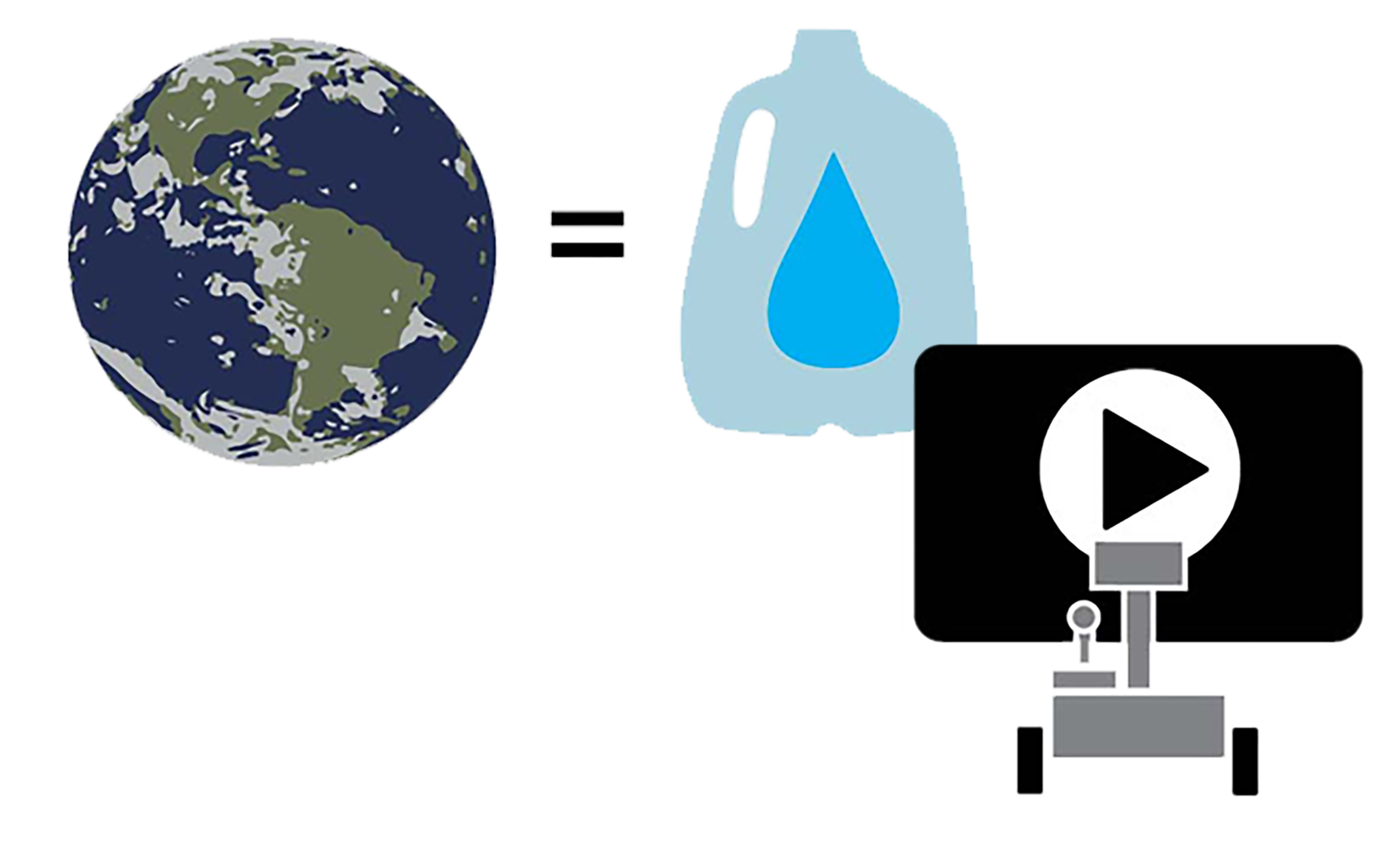Water on Earth
Youth explore the concept of water availability, accessibility, and usability on Earth.
Image

Youth Will Know
- There are different reservoirs of water on Earth: on the surface, in the atmosphere, and underground.
- Only a small amount of all the water on Earth is usable for humans.
- Chemical properties like salinity affect whether available water can be used by humans.
- Much of the water that is not accessible or usable by humans is still habitable and used by other life forms.
Activity Downloads
|
S1_Water_on_Earth_Educator_Guide
Water on Earth Educator Guide
|
|
|
S1_Water_on_Earth_Science_Notebook
Water on Earth Science Notebook
|
Set Up
The Educator Guide has a script, materials list, and prep directions. Be sure to have it open and ready to help guide you through every activity.
- Read Science Series guide.
- Test video links.
- Print and copy Science Notebooks for each youth.
- Slice a potato.
- Consider printing tables (pp. 36–39) and cards.
Guiding Questions
- How much of Earth’s water is usable?
- What is salinity and how does it affect the amount of water we can use?
- Is usable water for humans the same as habitable water for primitive life?
Youth Will Do
- Observe the effects of fresh water and saltwater on potatoes.
Did You Know
Salt in the oceans comes from the land. Groundwater dissolves small amounts of salt in rocks, which rivers carry to the ocean. As water evaporates and leaves the salt, the salinity of the ocean increases.
Quick Tips
- If you don't have a potato on hand, use an apple.
- Turn the Earth's Water video into an activity: you'll need a gallon of water, measuring spoons, and cups labeled for each reservoir.
Glossary
- Availability: Is water present?
- Accessibility: How easy is it to get?
- Usability: Is it clean enough for humans to use?
- Habitability: Can organisms live in the water?
Related Videos
Activity Timing
5 min
Introduction
10 min
Water on Earth
20 min
Dissolved Contaminants
5 min
Discussion
15 min
Habitability
10 min
Wrap Up
65 min
Total